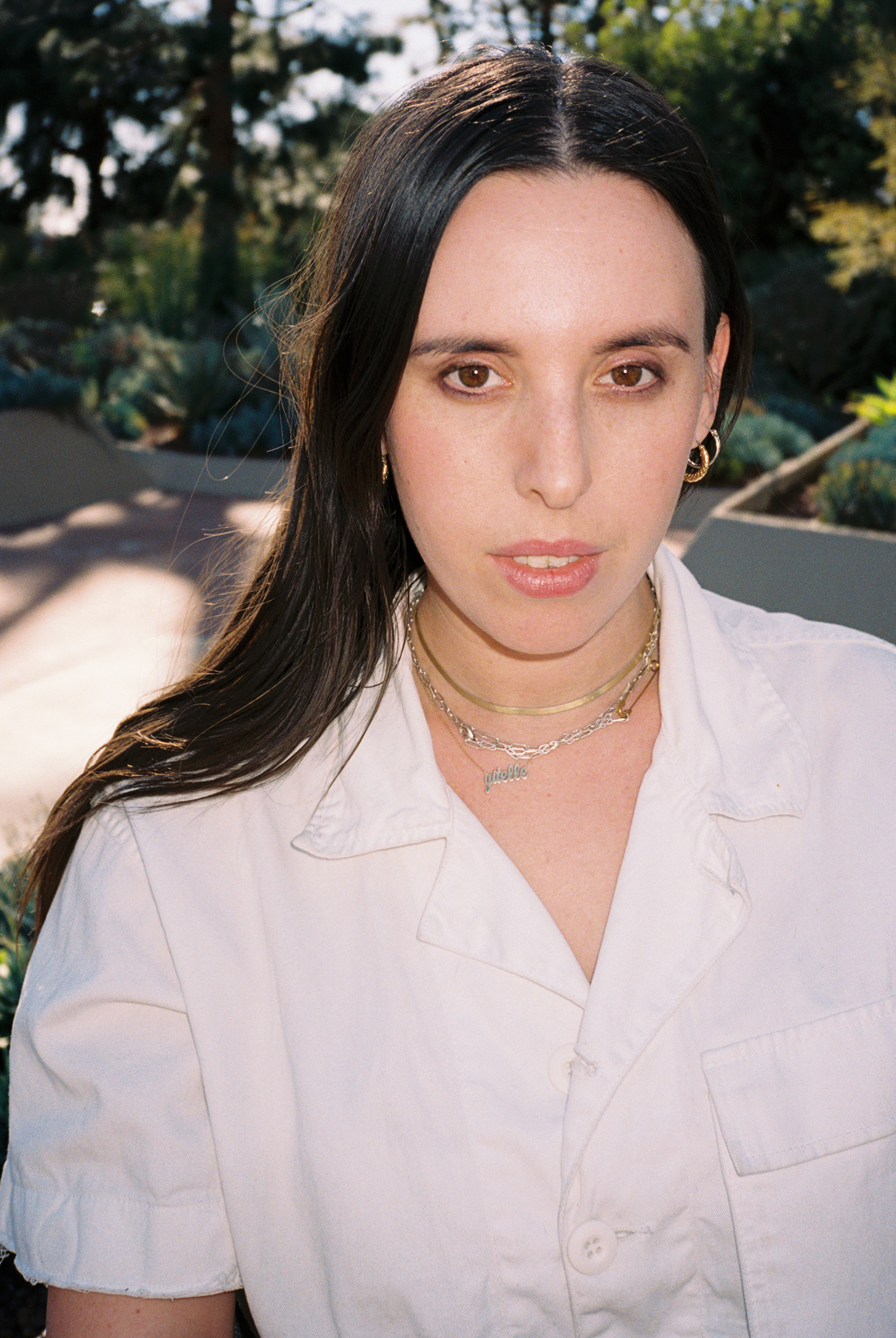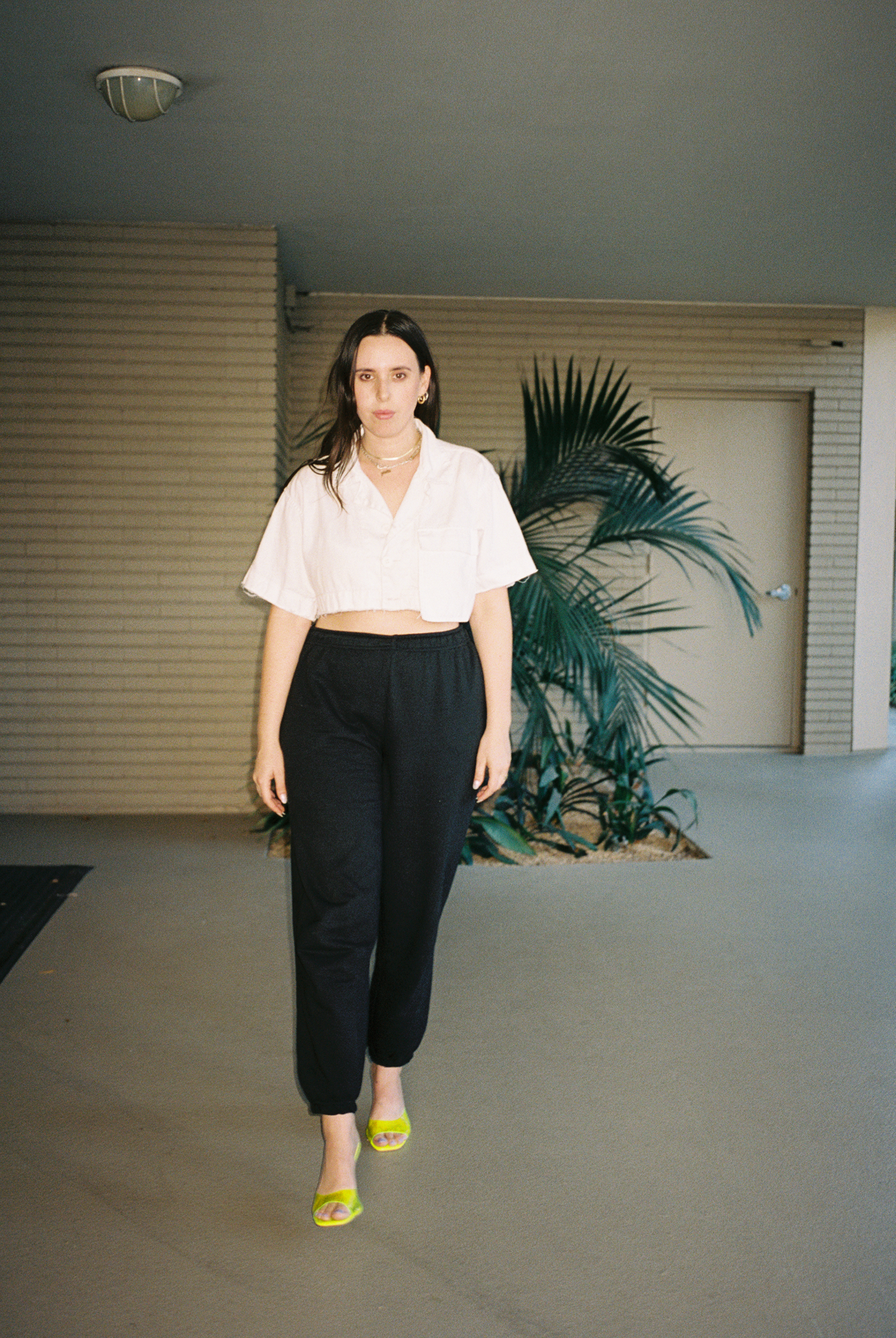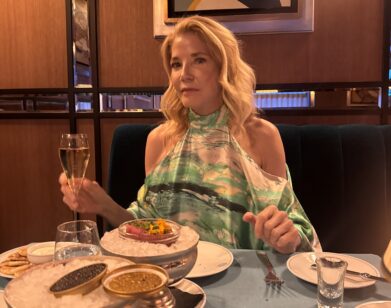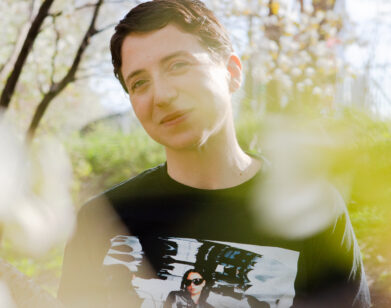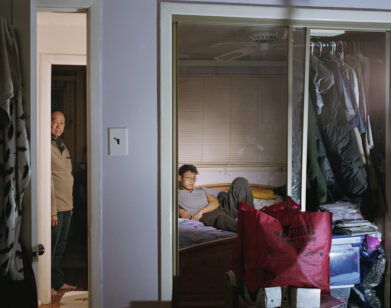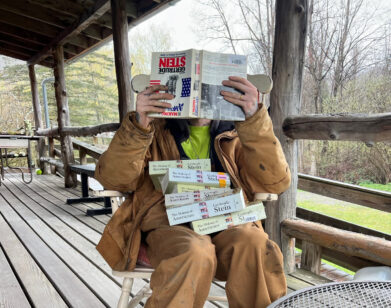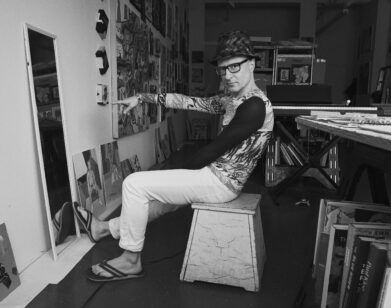in conversation
Emily Segal Can See the Future
Emily Segal is sizing up the future. Ultra-spicy food, melody-less music, and hallucinogenic shrooms zoom down the pipeline of her metatrend report. How foregone are these conclusions? Segal’s consultancy, Nemesis, says in its COVID-era “DOOM!” report that trends as we know them may be ending, eclipsed by “mega-trends” like climate change. Her Nemesis co-founder Martti Kalliala says trends are over once they’re fit to print, akin to destructive tests in a science lab, or tourists self-photographing in a super bloom. Things often seem obvious in hindsight. In 2014, Segal and her fellow members of the trend forecasting collective K-HOLE rode the riptide of their report on normcore, which was so endlessly referenced and think-pieced that the word was shortlisted for the Oxford Dictionary’s Word of the Year. Segal has since cofounded Deluge, a literary press pledging to publish books that are at once experimental and readable. Its first release is her own auto-fictional debut: Mercury Retrograde.
Emily Segal, the character, commutes in reverse. She takes the train a single stop from her tiny East Village apartment to Disneyfying Williamsburg for an internet startup job where she is neither artist nor marketer—“a smoothie of contemporary nothing.” As the perennial hamster wheels of New York’s culture cycle turn her cynical and hyperactive, she plots her escape from the company. The Emily Segal I met with over video call is a novelist, wearing white from her home in L.A.
———
CHARLIE JANELLE FREIBERG: You recently spoke with the How Long Gone boys about how working out with a kettlebell became part of your book-writing process. What’s your regimen these days?
EMILY SEGAL: I’ve been doing the thing that people in L.A. do, which is going for “hikes” in scare quotes. It’s exactly what I rolled my eyes at when there was this mass exodus of art people from New York to L.A., and everyone was discovering juicing, which I thought was beyond inane.
FREIBERG: Now you’re “doing the meme” along with them, as your character would say.
SEGAL: Wow, definitely. Now I’m one of them. I’m probably a delusional L.A. bimbo now.
FREIBERG: I see that the Deluge Books Instagram posted a photo of a guy peeing on experimental lit that’s boring. How would you like Deluge to impact the genre?
SEGAL: We’re trying to think beyond what conventional genres do. The literary world tends to either fetishize writing that’s difficult for the sake of being difficult or will hit you over the head in the most obvious way possible. We see a Venn diagram of work that’s inventive and strange and work that’s fun and binge-y. There’s an idea that those two things can’t coexist. A lot of the books that I love and that my co-founders love already exist at that intersection.
FREIBERG: How did you and your co-founders birth the project?
SEGAL: I’d been barking up the tree of a more traditional path for publishing Mercury Retrograde when COVID hit, and I started thinking about how tricky it would be in this new landscape. I was deep in conversation with Hannah Baer and Cyrus Dunham about their respective books, and I thought, “Maybe we could start a press together,” and we just decided to go for it. It turns out that it’s very straightforward. Perhaps not as straightforward was I thought when I was first Googling, but self-deception is required when starting out. I was like, “Cool. It’s super easy to start a religion or a publishing company.”
I found all these tools that turn texts into books and get them to people quickly, whereas in the traditional literary world it takes years and years to get anything published. It’s like Downton Abbey: super rarefied etiquette, very slow and uptight. They want to get books publicized in X number of media outlets and to make sure that Y moms across the country read it in their book club, and maybe post about it on Pinterest as the most advanced web-related thing. At the same time, music, fashion, and TV are readily borrowing from one another, and willing to interpenetrate and be multidisciplinary. It’s as if literature is stuck in like, 1992, and isn’t getting into the mix.
FREIBERG: I want to go back to your early years when you were studying comp lit in Providence. What piqued your interest in culture and trends?
SEGAL: It was a survival strategy for me. I grew up in New York, and I went to this really fancy school where literally 12-year-olds were wearing Dolce & Gabbana, which I didn’t have, but my ability to understand what all of those codes meant helped me function. I had always been pretty obsessed with fashion and fashion magazines, and have a frighteningly strong retention ability, so It was easy for me to remember everything about every designer and every model and what was written about where.
Then when I was a teenager I found myself wanting things before they were popularly available. I remember thinking, “Ooh, paisley!” or “Ooh, ballet flats with tons of necklaces!” or whatever, like an Olsens meme. I would become fixated on it, and then a year-and-a-half later, it would be popular. It felt a bit spooky.
FREIBERG: Like a premonition, almost.
SEGAL: I mean, it wasn’t very deep. What we’re talking about is consumer desire. I definitely wasn’t alone in being a teenager who was obsessed with clothes or things that I thought would make my look or identity complete. It’s more that once I noticed that feedback loop, it made me think there might be a mechanism I could tap into.
Then I read Pattern Recognition by William Gibson in college. I was obsessed with Cayce Pollard, the main character, and it made me want to figure out a way to have a career that was modeled after hers. It’s kind of funny, because she’s actually in mortal danger in the whole book. Her ability to tune into the heart of what people want and to understand why something may or may not happen is related to her being very traumatized, but I didn’t think of it in those terms at the time. It’s sort of like people who want to be like Gordon Gekko from Wall Street or something.
FREIBERG: Your character in Mercury Retrograde describes compiling images for the company she works for, like a silver blob engulfing a silver cube, or the Fibonacci sequence superimposed on Sonic the Hedgehog. Where’d you first start mood-boarding?
SEGAL: For me, it was intimately related to my use of the website Are.na.
FREIBERG: Charles Broskoski’s platform.
SEGAL: That’s right. Charles is one of my best friends, and I’ve been using it the since its inception. There was a relationship between Internet surf clubs, early Internet artists, people just blogging, some archival, fetish-y, early-2000s energy, and Are.na. All of those things kind of came together. I started using it as a platform for doing visual research, collecting and storing my own images, finding other people’s. K-HOLE used it for research the whole time we were working together. I still use it as part of my practice for Nemesis.
FREIBERG: You’re now a novelist who has this ornate visual language, when visuals from Instagram and the like are embedded in our everyday life. Is there something to translating that into words?
SEGAL: Definitely. I think “genre writers” in cyberpunk and science fiction and fantasy have often done it better than “literary fiction writers.” But there’s also people like Edith Wharton from the 19th century whose visual descriptions are super, super tight. I’ve made a career out of the specificity of cultural signals. I pay a lot of attention to aesthetics, and I definitely want to translate that into my writing. Every image holds a poem, almost.
I also love when outfits are really specific in books because I just think it’s fun to read about. When people’s physicality is overexplained, it’s like trying to thread the needle in your mind’s eye to exactly what the author was intending, whereas if the author is like, “It’s a shredded medium blue denim jacket,” you don’t have to strain to picture it, but it still gives you a lot of texture.
FREIBERG: Your book features an aura reader, tarot cards with a recurring devil figure, and horoscopes, not to mention an astrological title. What role does mysticism play in the book?
SEGAL: Growing up I read my horoscope in teen magazines, and was obsessed with whatever it said: “A Scorpio is going to experience this this month.” I always loved that. I didn’t have a deeper relationship to it for many years, until 2013 when I started this research project on astrology, weather, and sleep for a friend of mine. I was trying to understand what “energy” meant in a more New Age frame. I started following Chani Nicholas, and her teacher Demetra George, and Robert Hand.
I wasn’t really fluent in it until about a year-and-a-half ago, when I had a reading with a friend of a friend. We got into a long conversation about the relationship between trend forecasting and astrological forecasting, especially because there was a Venus retrograde coming up; a reversal of fashion trends and what was considered beautiful. He started tutoring me. That’s when I broke through.
Astrology is star lore, the mythopoetic system that’s associated with the heavens. I don’t exactly use it to forecast trends in a direct way. It’s not really an A-to-B type thing. It’s not like a client is asking me to look into something, and then I pull up a chart for it and do an astrological analysis. It’s more like there are concurrent strands. They’re both languages that I speak, and so they inform one another in the soup of my research.
FREIBERG: You penned an essay last year as part of Nemesis called The Umami Theory of Value, which posits umami as the stuff that makes up the experience economy.
SEGAL: We were trying to look at a consumption paradigm that had to do with immaterial experiences being considered prestigious or premium. The idea that there’s no “there” there sometimes needs to be said explicitly. I definitely have been fascinated with immateriality. I think that anyone who flirts with conceptual art is.
“Experience is a hoax” is a line from an Alice Notley poem that’s one of the epigraphs to my book, and that really spoke to me for a few reasons. One is that the poem that it’s pulled from has to do with the way that men bamboozle young women into thinking they need their input because they have more experience.
FREIBERG: I drew some parallels between Emily and Anna Weiner from her recent memoir Uncanny Valley. Both she and your character seek to understand the psychoses of their bosses, at companies where it seems it’s often women who are burdened to do so.
This fetishizing of maleness and not knowing if you want to fuck, marry, or kill the men in your sphere was something I was trying to work on in the book. But then also, because I was writing autofiction that was riffing on certain real experiences of mine to create a fiction, I thought the idea that experience itself was a hoax was a fitting phrase.
FREIBERG: In the book, Emily recognizes the power of pareidolia when pitching logos to her boss, then reflects on how her grandfather never wanted to romanticize the inanimate. Where do you fall?
SEGAL: Hmm. In the book, the grandfather doesn’t care what happens to his ashes, being like, “I don’t give a shit. I’ll be dead.” I personally believe in the power of images. Their magic, their multivalence. Whether that’s sentimental or not, I can’t say.

